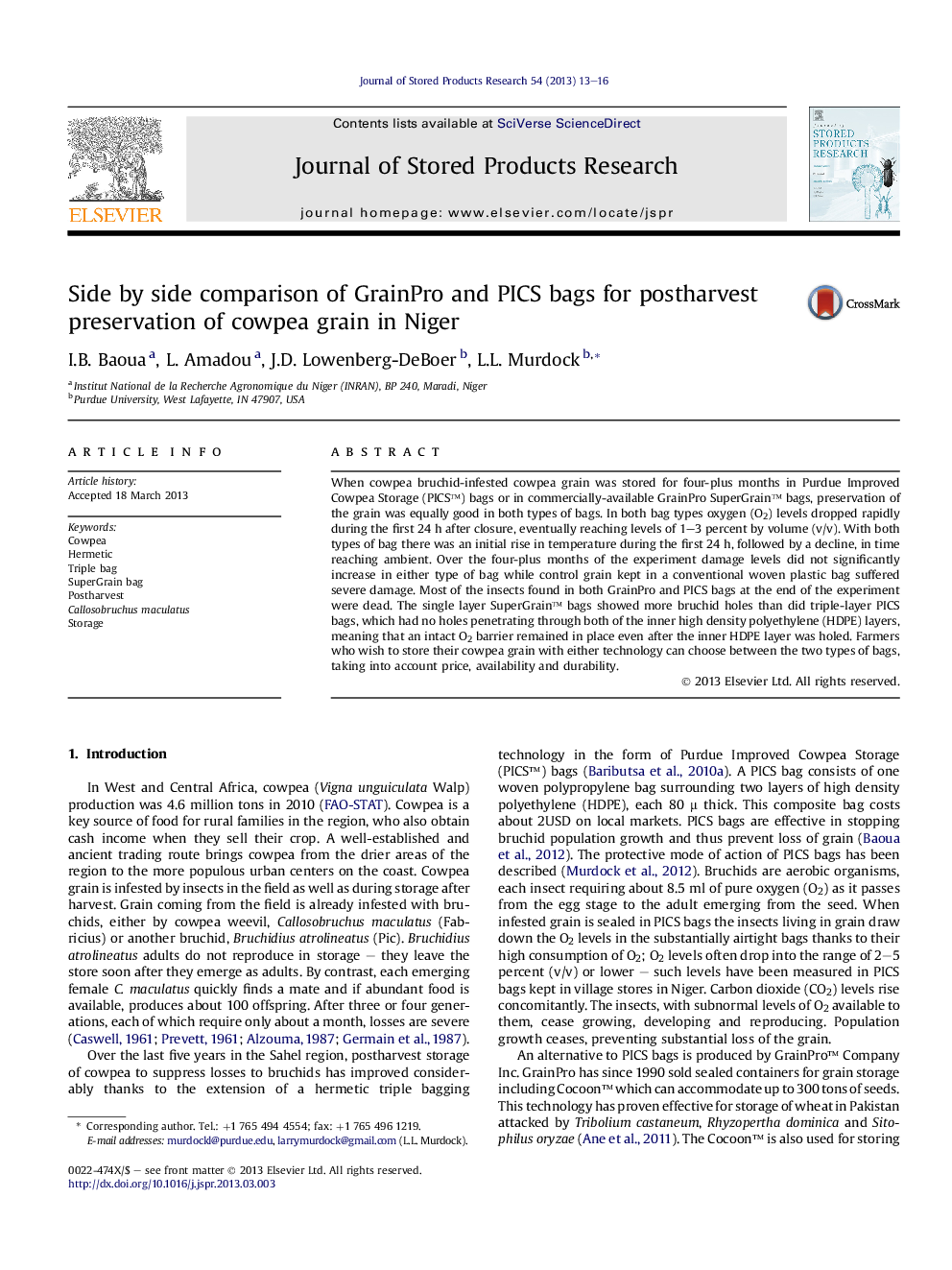| Article ID | Journal | Published Year | Pages | File Type |
|---|---|---|---|---|
| 4517099 | Journal of Stored Products Research | 2013 | 4 Pages |
•Bruchid-infested cowpea grain was stored in PICS bags and GrainPro SuperGrain bags.•Changes in O2 levels and temperatures inside the bags were nearly identical.•Bruchid population growth quickly ceased within each type of bag.•The two types of bags preserved the grain equally well.•Farmers can use either bag, taking into account cost, durability and availability.
When cowpea bruchid-infested cowpea grain was stored for four-plus months in Purdue Improved Cowpea Storage (PICS™) bags or in commercially-available GrainPro SuperGrain™ bags, preservation of the grain was equally good in both types of bags. In both bag types oxygen (O2) levels dropped rapidly during the first 24 h after closure, eventually reaching levels of 1–3 percent by volume (v/v). With both types of bag there was an initial rise in temperature during the first 24 h, followed by a decline, in time reaching ambient. Over the four-plus months of the experiment damage levels did not significantly increase in either type of bag while control grain kept in a conventional woven plastic bag suffered severe damage. Most of the insects found in both GrainPro and PICS bags at the end of the experiment were dead. The single layer SuperGrain™ bags showed more bruchid holes than did triple-layer PICS bags, which had no holes penetrating through both of the inner high density polyethylene (HDPE) layers, meaning that an intact O2 barrier remained in place even after the inner HDPE layer was holed. Farmers who wish to store their cowpea grain with either technology can choose between the two types of bags, taking into account price, availability and durability.
